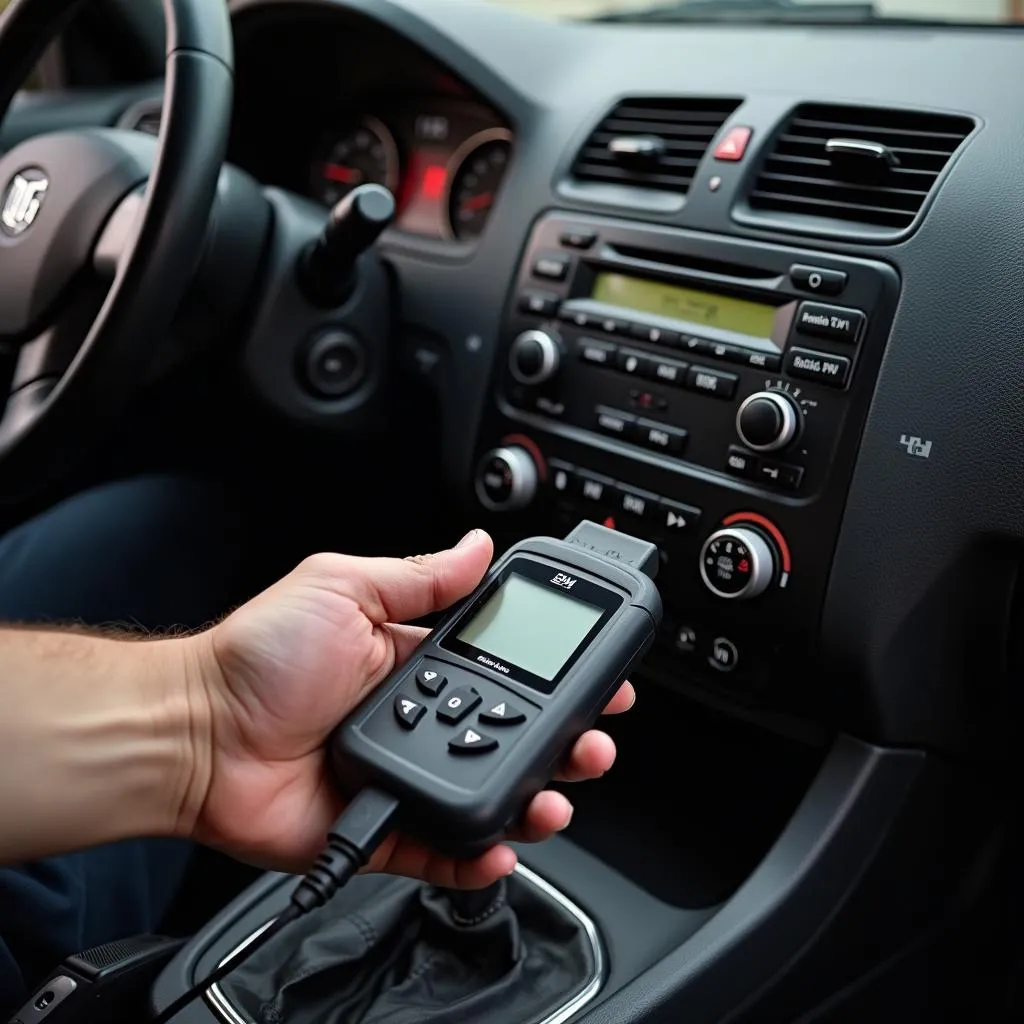You’re driving along, enjoying the ride, when suddenly a warning pops up on your dashboard: “Warning: Maximum Number of Seats Reached.” This message can be confusing, especially if you’re certain you haven’t exceeded your vehicle’s passenger capacity. As a specialist in automotive electrical engineering with extensive experience in remote diagnostics, programming, and software installation, I’m here to guide you through the potential causes of this warning and provide practical solutions to get you back on the road with peace of mind.
Deciphering the “Maximum Number of Seats Reached” Warning
This warning, though seemingly straightforward, often stems from glitches within the intricate network of sensors and software that modern vehicles rely on. While it might appear when you genuinely have all seats occupied, more often than not, it’s a false positive triggered by one of the following:
- Faulty Seat Occupancy Sensor: Your car uses sensors, often located within the seat itself, to detect passenger weight and activate airbags accordingly. A malfunctioning sensor might send erroneous signals, leading the system to believe a seat is occupied when it’s not.
- Software Malfunction: Like any computer system, your car’s onboard software can experience errors. These glitches can disrupt communication between sensors and the main system, resulting in inaccurate readings, including the “Maximum Number of Seats Reached” warning.
- Wiring Issues: The wiring harness connecting the seat occupancy sensor to the car’s computer can become damaged due to wear and tear, corrosion, or even rodent interference. This can disrupt the flow of information and lead to false readings.
Troubleshooting the Warning: A Step-by-Step Guide
Before heading to a mechanic, there are a few troubleshooting steps you can take:
- Visual Inspection: Begin with a visual inspection of the seats, checking for any visible damage or objects that might be triggering the sensor. Ensure seatbelts are not fastened when the seats are empty.
- Resetting the System: Just like rebooting your computer can resolve minor software issues, disconnecting your car battery for a few minutes can sometimes reset the vehicle’s system and clear the error.
- Checking for Diagnostic Trouble Codes (DTCs): Using an OBD-II scanner, a handheld device that plugs into your car’s diagnostic port, you can check for any stored error codes related to the seat occupancy system. These codes can provide valuable clues about the source of the problem.
Seeking Professional Assistance
If the problem persists despite your efforts, it’s essential to consult a qualified automotive electrician or mechanic specializing in automotive electronics. They possess the specialized tools and expertise to accurately diagnose and address the root cause, whether it’s a faulty sensor, software glitch, or wiring issue.
“Addressing these issues often requires specialized equipment and in-depth knowledge of the vehicle’s electrical system,” says John Miller, a seasoned automotive electrical engineer with over 20 years of experience. “Attempting DIY repairs without the proper expertise could potentially exacerbate the problem or even pose safety risks.”
Preventing Future Occurrences
While some causes, like software glitches, can be unpredictable, proactively maintaining your vehicle can minimize the chances of encountering this warning. Regular servicing by a qualified technician, including checks on the wiring harness and sensor functionality, can go a long way in preventing such issues.
Frequently Asked Questions
Q: Is it safe to drive with the “Maximum Number of Seats Reached” warning on?
A: While the warning itself might not directly indicate an immediate safety hazard, it often points to an underlying issue with the seat occupancy detection system, which is crucial for airbag deployment. Driving with a potentially compromised safety system is never advisable.
Q: Can I fix a faulty seat occupancy sensor myself?
A: While replacing a sensor might seem tempting, it’s not recommended unless you have the technical expertise. Incorrect installation or using incompatible parts can lead to further complications.
Q: How often should I get my car’s electrical system checked?
A: A general rule of thumb is to have your car’s electrical system inspected annually by a qualified mechanic as part of your routine maintenance schedule.
Remember, addressing the “Maximum Number of Seats Reached” warning promptly ensures both the proper functioning of your vehicle’s safety systems and your peace of mind on the road.

